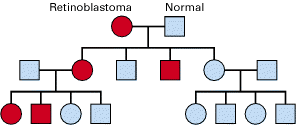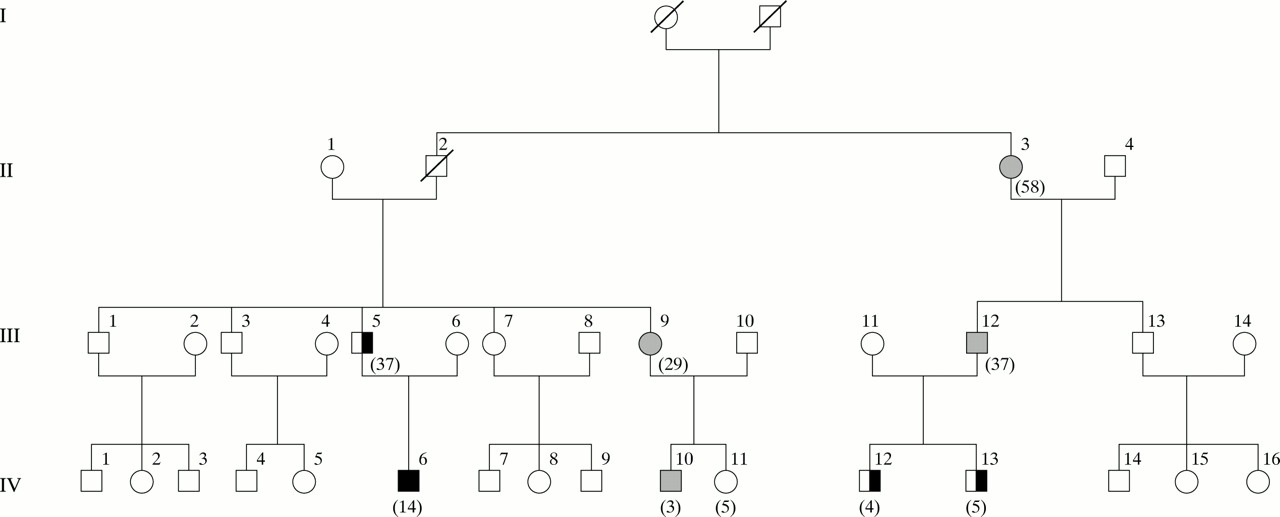Pedigree
A pedigree should be fairly easy to obtain for retinoblastoma because 90% of patients survive. However, there has been variation concerning the specifics of how retinoblastoma is inherited and therefore, pedigrees do differ.
A "typical" pedigree

In most families, the tumour predisposition segregates as an autosomal dominant trait with high (90%) penetrance and affected subjects usually develop bilateral multifocal tumours. Pedigrees also are consistent where siblings and offspring develop the same type of tumors as the original patient.
Rare instances of familial retinoblastoma with low penetrance and variable expressivity have been described. In such families, patients develop retinoblastoma later than classical familial cases, there is a high rate of unilateral cases, and phenotypically normal obligate carriers are observed (6).

This is a low penetrance pedigree. Half blackened symbols denote unilateral retinoblastoma and completely blackened symbol denotes bilateral retinoblastoma. Shaded symbols denote unaffected carriers. Values in brackets indicate the present age of the subject (in years). It has been thought that perhaps a T to a C mutation in the polypyrimidine tract of the exon 9 splicing site of the RB1 gene responsible for low penetrance hereditary retinoblastoma (4).
Debated Genetic Mechanism Behind the Pedigree
The question is what characteristic enhance mutation rates and whether mendelian genetics is observed? In hereditary retinoblastoma, the first "hit" may occur in the meiotic cell cycle. Germ line mutation studies have shown that mutation frequency is higher in spermatogenesis than during oogenesis. Age also seems to have an effect in mutation frequency. Fathers 50 years of age or older had a relative risk of 5.0 to have a child with sporadic hereditary retinoblastoma compared with fathers in the population in general and that mothers 35 years of age or older had a relative risk of 1.7 compared with mothers in the population in general. It is important to remember however that a germ line mutation alone doesn't cause retinoblastoma according to the two-hit model. Somatic mutations are necessary and are independent of germ line mutations (5).
Mosaicism also may play a role in inheritance. Some studied families were able to document mosaicism for the initial mutation in the retinoblastoma gene, either in the patient or in one of the patient's parents. Mosaicism is a genetic change in a cell that causes all cells to be mixoploidy after mitotic cell divisions. Mixoploidy means that two or more genetically different cell lineages are in one person(7).